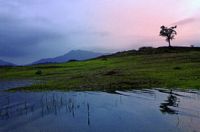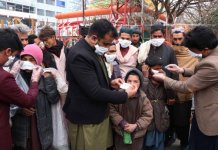
This article tries to assess the social and environmental impacts of tourism on the socially backward and environmentally sensitive Wayanadu district of Kerala.
Tourism is widely conceived to be a service which results in considerable degree of sharing between the host community and the visitors. The natural environment as well as the cultural heritage of a community becomes selling products in tourism. The interaction between the hosts and visitors leaves its mark on the environment, people and culture of the hosts.
Responsible tourism is a concept which measures the effects of tourism on the well being of the host community, their culture as well as on local environment. In this respect, responsible tourism is a concept which acts as an impact assessment instrument. Responsible tourism envisages minimum negative effect on culture of the indigenous society and environment. Simultaneously tourism shall improve the well-being of the people, ensure environment sustainability besides magnifying host culture.
This paper attempts to evaluate the tourism horoscope of the Wayanadu District from the angle of responsible tourism. Wayanadu is a unique geographical and environment unit given its attitude, climate and other environmental features. The microclimate of the district is classified as cloud forest. Ecology is highly fragile due to its tropical nature coupled with intensive agricultural activity. Socio-cultural environment of the district is also unique as the tribal people constitutes one-fourth of the total population and the high degree of agricultural orientation of the people. It is into this peculiar socio-cultural framework that tourism enters as an entirely exogenous variable. The tourism industry is promoted by professionals and entrepreneurs who are mostly outsiders. But the industry decisively produces certain economic, cultural and environmental effects.
The effects of tourism on the agrarian economy, well being of the indigenous people and on the fragile environment needs analytical attention. In Wayanadu, the dominant players in the tourism industry are the resort owners and the home stay providers. The resorts are established by professional people with sizable capital. Since the local people are not professionals and are not owners of capital, the benefit from the industry doesn’t go to them. Lack of education and skill formation makes their cause worse. Thus, tourism as a service product comes outside the delivery capabilities of the local people.
Wayanadu, as a tourism destination is known for its scenic beauty. Reserved forests, wild life sanctuaries, water falls, rock caves, riverine islands, mountains, hill stations and dams are the major tourist spots in the district.
The following are the major tourist destinations in the district:
The Vythiri Tourism Area (VTA).
The Muthanga Wildlife Sanctury,
Kuruva Island,
Pakshippathalam,
Thirunelli forests,
Banasura Sagar and Karappuzha dams,
Soochippara, Meenmutty and Kanthanpara waterfalls
Idackal Caves and
Pookkodu Lake
All these tourist destinations are ecologically sensitive and are facing ecological strains due to excessive tourist inflows over the last five years. Resorts and home stays thrive around these tourist destinations. Increasing number of resorts without adequate environment protection measures is causing rapid depletion of the cloud forests in the district. Rising temperature, declining fog cover and its duration and decreasing rainfall in the district’s microclimatic area are supportive of the ongoing vegetation depletion and environment degradation.
Resorts and home stays are the two important types of tourism infrastructure available in the district. Most of the resorts are located in the Vythiri Tourism Area (VTA) which lies near to the Churam (Ghat) in the south – eastern border of the district. The Vyhiri Tourism Area holds the longest stretch of cloud forest in the district.
The Vythiri Tourism Area (VTA)
The Vythiri Tourism Area comprises of mainly the Vythiri panchayat and the adjoining areas. Vythiri is located near the upper mouth of the ghat (churam). The environmental significance of Vythiri is that the area is dominated by cloud forests. Long stretch of fog during the day time coupled with cool microclimatic conditions makes it the most attractive tourist area in the district. The wilderness of lush evergreen forests complemented by wet and cool climate makes it a hot tourist destination despite is remoteness compared to other tourist locations in Kerala. Lakkidi which is in the Vythiri Tourism Area was the largest rain receiving region in Kerala till recently. The tourism spectrum of Vythiri is dominated by resorts. Around seventy per cent of the major resorts in Wayanadu are located in Vythiri. Last year India Today magazine has selected the Vythiri Resort as one of the fifty must see destinations in India.
Agriculture and tourism are the two important activities in the VTA. Expansion of tourism in the VTA is not finished with mushrooming of resorts. Supplementary tourism activities including trade and hotels along with rapid semi-urbanisation of the area have lead to deterioration of cloud forests in the VTA. Decline in forest cover lead to declining rainfall, reduced fog impact and increasing day temperatures. Now, Lakkidi is no more the rainiest place in Kerala as Neryamangalam has pushed it to the second spot.
Another instance of tourism making no responsibility to environment protection is the increasing volume of non-degradable waste in the VTA. In the absence of a public authority like a municipality to carryout solid waste disposal, plastic and other non-degradable wastes are threatening the fragile ecology of the VTA.
The Vythiri Tourism Area again fails when its contribution to the indigenous community is measured. As the entire resorts are owned by professional firms from other districts, the participation of the local community as entrepreneurs in tourism development becomes negligible. The resorts also use outsiders at managerial and skilled manpower level, leaving only unskilled employment opportunities to the locals. The most marginalised of the indigenous people; the Adivasis are completely outside benefit circle of the tourism industry. Often the forest products from the adivasis are procured by intermediary traders and sold to the tourists.
Tourism in rest of Wayanadu: the responsible scenario.
In rest of Wayanadu, the tourism industry’s effect on the environment is the same as in the case of the VTA. But in contrast to the VTA, the local community has able to get greater benefit here. This is because the tourism suppliers in rest of Wayanadu are homes stay suppliers and there are only few resorts. The home stays are mostly arranged by local inhabitants. The reward for food, accommodation and guidance to the tourists are all goes to the local home stay provider. But in rest of Wayanadu also, the participation of the indigenous Scheduled Tribe and Scheduled Caste population is almost nil. Tourism is not positively contributing to their income or in other words, the weaker sections of the local community are economically untouched by tourism generated income expansion. Further, there is little interaction between the tourists and the scheduled tribes who are supposed to be the original inhabitants of the district. The cultural and artistical treasures of the community are not represented to the tourists; and therefore cultural tourism never enters into the scenario. Instead, the Dalits are increasingly displaced from their land and are absorbed to the glittering consumerist culture by shedding away their own cultural identity. Tourism in the district is uni-centric in the sense that it is ‘nature based’ and not culture based.
The major tourist destinations in rest of Vynadu are also ecological hotspots. Muthanga Wildlife Sanctuary which inhabits elephants, leopards, different bird species etc. recently registered increasing number of elephant attacks on the tourists. In Thirunelly, expansion of farming activities compelled a group of King cobras to attack farmers in mid 2007. Toward the end of summer last year, leopards made many attack on house hold animals due to rapid shrinking of their homeland.
Another area where tourism adversely affected environment is the three waterfalls- Meenmutty, Soochippara and Kanthanpara which lies in the Meppady grama panchayath. These waterfalls are the latest to enter into the tourist map; and are witnessing excess tourist inflows over the last few years. There is no authority to check accumulation of non degradable waste, in the sides of these waterfalls.
The ‘Uravu’ enterprise tries to make a link between the local people and the tourism industry is a venture which utilises tourism to benefit the local community. ‘Uravu’ is making traditional and tribal products at a commercial scale for the tourists. Uravu is tries to give income to the local people by employing them in the manufacture of the traditional nature based products. Uravu can be considered as the pioneer in the empirical application of the concept of responsible tourism in the district by establishing a link between the domestic industry and the local people. But ‘Uravu’ remains a product based enterprise and is not destination based as the resorts. Hence the benefit from the industry to the indigenous people remains marginal.
Tourism in the Wayanadu district is ‘nature based’. It is the scenic beauty of the district which makes it a tourist destination. But the effect of the ‘nature based’ tourism on the remaining ecological hotspots of the district is turning out to be destructive. Ecologically sensitive areas like the previously untouched ‘Kuruva Island’ and Muthanga Forests are now coming under more strains due to excess tourist inflows. The ‘Kuruva’ which is a reverine island, is losing its biological diversity and antiquity due to lack of preservation strategies. Besides, the large scale depletion of the cloud forest vegetation in the district is accelerating forces of micro climatic charges. The depletion of forest cover over the last one and a half decade has reduced the duration and intensity of cold period both across day and year. The flora and fauna of the district also lost considerable portion of their diversity due to the depletion of cloud forests.
Tourism in the district has not improved the well-being of the local people and hence produced only economic exclusion. There is little interaction between the local people and the visitors which produces cultural exclusion. The adverse effect of tourism on the district’s environment proves the existence of environmental exclusion. At the same time, the natural beauty of the district attracts the tourists. In conclusion, tourism has produced natural inclusion and cultural exclusion in the district.










